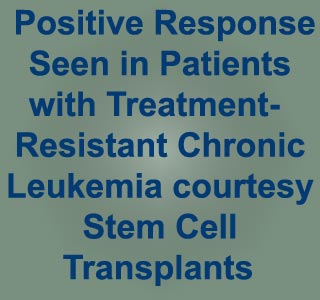
Survival rates for leukemia have enhanced in the last decade. However patients with uncommon, destructive forms of CLL do not respond well to standard chemotherapy-based and targeted treatments. These patients seemingly die within a few years of diagnosis. Genetic abnormalities are displayed by patients who resist the treatment and these abnormalities often predict their lack of response. This study examined if alloSCT could be an efficient treatment for these patients independent of underlying genetic abnormalities.
“This study, which is one of the largest of its kind, confirms that allogeneic stem cell transplants are a promising therapeutic option for treatment-resistant CLL patients fighting particularly aggressive disease, regardless of their genetic risk profile. However, because stem cell transplants come with serious risks, they should be reserved for only this group of patients until further studies can be done,” commented Peter Dreger, MD, of the Department of Medicine, University of Heidelberg, Germany, and lead author of the study.
Blood cells are accumulated from a donor and then transferred into the patient in alloSCT. These cells travel to the bone marrow and form new blood cells that replace those affected with the disease. However this treatment may not be successful and some may even be fatal. The phase II study enlisted 90 patients with treatment resistant CLL who had received alloSCT. The stem cell donors were either healthy siblings or distinct, however matched volunteers.
Patients in the study received conditioning before the transplant. This was a regular therapy before stem cell transplants to assist the body receive and accept the transplanted cells. Experts adopted a reduced-intensity conditioning approach with two common chemotherapies. This was mainly done to lower complications and permit donor stem cells to combat the disease themselves. More than 40 percent participants with this otherwise fatal disease were observed to enjoy long-term liberty from relapse after treatment with alloSCT. These findings highlight that alloSCT is a viable and potentially curative treatment for patients with high-risk CLL. This reveals that it may be considered for this patient population.
These findings are according to the results of a study published online today in Blood, the journal of the American Society of Hematology.
